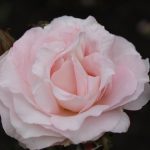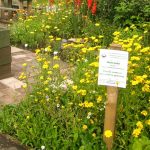Tales from the Garden – Late Summer at Redcroft.
It hasn’t all been plain sailing here since I last wrote in June. Our huge horse chestnut tree has developed the leaf miner and leaf blotch problem which is so widespread now. The lower leaves are covered in unsightly brown patches and although it won’t kill the tree – at least not for quite a while – it certainly looks bad now, and will do in coming years, from about July. Into the bargain we have had two unexplained deaths, one of a fast growing but quite young tree, a Clerodendron, and the other of an old Chaenomeles which has never really flourished. I wonder if that could be a delayed result of last winter’s damaging frosts.
In compensation, both the lawn and the long grass, which is now all cut, look very green and healthy thanks to the amount of rain we have had recently. And the autumn crocuses are just beginning to show in the orchard and it looks like a good crop of apples again.
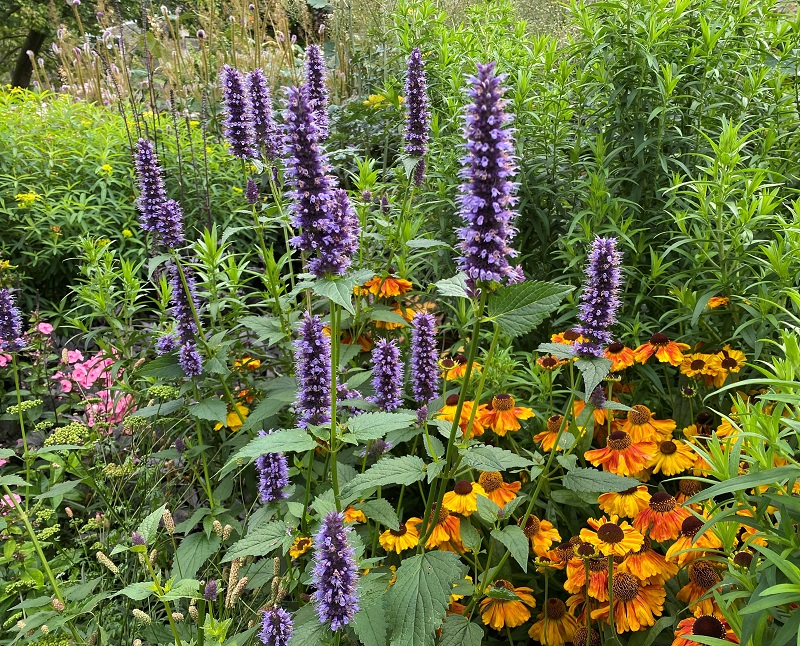 There is quite a bit of colour around the garden. Last autumn we had a big reorganisation of the herbaceous border and it has been much improved. We introduced one or two new plants, including this Agastache ‘Black Adder’ which came from Macplants. I had never heard of Agastache but I like the name and I am impressed with the plant. The flowers have lasted well and the blue provides a good contrast to the orange of Helenium ‘Sahin’s Early Flowerer’ which was divided and refreshed and has flowered well.
There is quite a bit of colour around the garden. Last autumn we had a big reorganisation of the herbaceous border and it has been much improved. We introduced one or two new plants, including this Agastache ‘Black Adder’ which came from Macplants. I had never heard of Agastache but I like the name and I am impressed with the plant. The flowers have lasted well and the blue provides a good contrast to the orange of Helenium ‘Sahin’s Early Flowerer’ which was divided and refreshed and has flowered well.
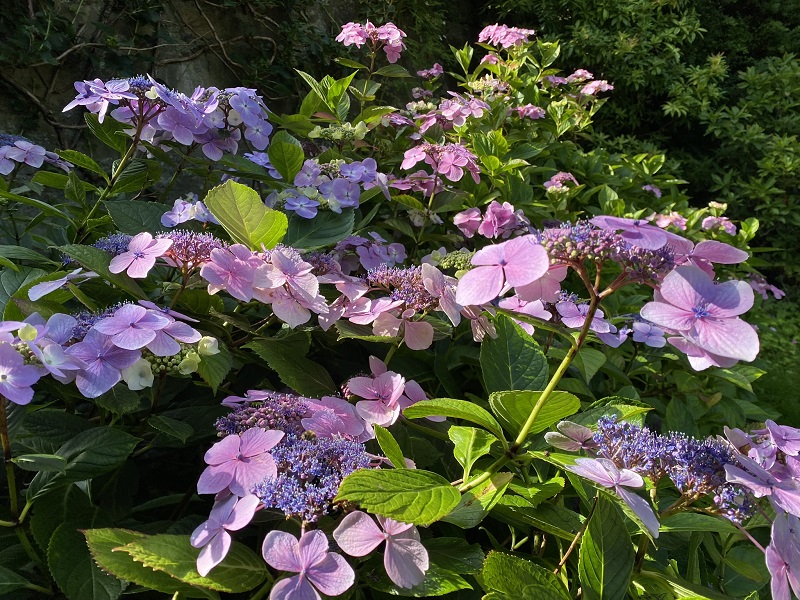 Hydrangeas are the stalwarts of this time of year and they have enjoyed the rain. You see many beautiful ones around Edinburgh where Annabelle and its off shoots are the most popular at the moment. This is a very traditional lacecap called Blue Wave I think, which can never quite make up its mind if it is blue or pink. It is part of a long group which has been in this good spot against the wall for many years.
Hydrangeas are the stalwarts of this time of year and they have enjoyed the rain. You see many beautiful ones around Edinburgh where Annabelle and its off shoots are the most popular at the moment. This is a very traditional lacecap called Blue Wave I think, which can never quite make up its mind if it is blue or pink. It is part of a long group which has been in this good spot against the wall for many years.
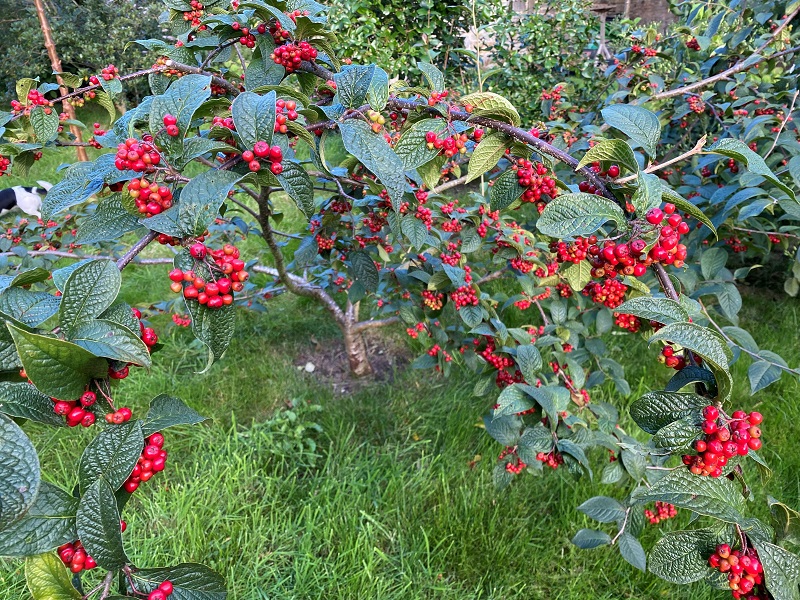 I grew this Cotoneaster bullatus from a berry in a friend’s garden and its lovely, shiny, early berries look forward to autumn. It spreads itself a bit too freely though and we have had to move the path to accommodate it.
I grew this Cotoneaster bullatus from a berry in a friend’s garden and its lovely, shiny, early berries look forward to autumn. It spreads itself a bit too freely though and we have had to move the path to accommodate it.
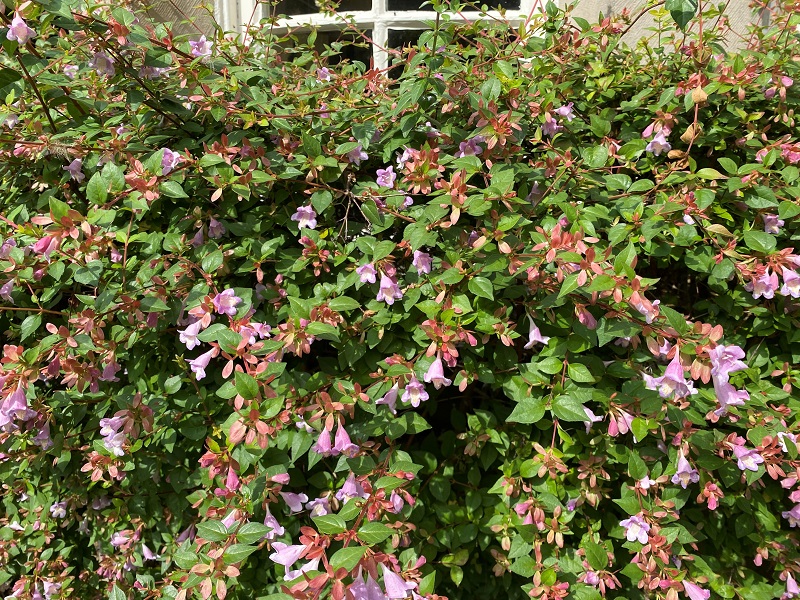 Abelia schumannii (syn. parvifolia), in contrast to the Cotoneaster, puts up with this position under a curved window where it has to be repeatedly cut back. But it continues to flower freely, much better than its cousin Abelia grandiflora at the top of the garden, but the latter is much more scented.
Abelia schumannii (syn. parvifolia), in contrast to the Cotoneaster, puts up with this position under a curved window where it has to be repeatedly cut back. But it continues to flower freely, much better than its cousin Abelia grandiflora at the top of the garden, but the latter is much more scented.
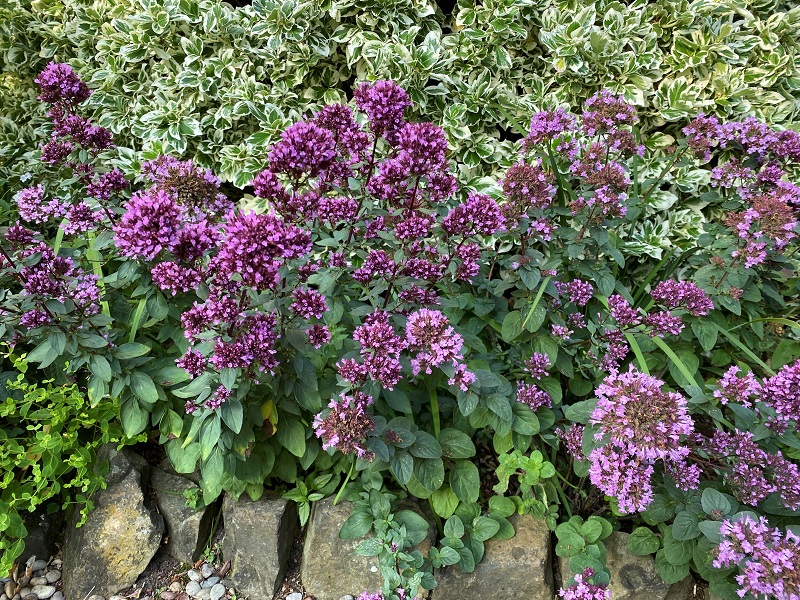 This group of Oregano ‘Herrenhausen’ was planted last year and has done very well. It looks consistently good and has managed to become the dominant plant in this narrow bed under the variegated Euonymous fortunei, giving what had been something of a jumble a more orderly look.
This group of Oregano ‘Herrenhausen’ was planted last year and has done very well. It looks consistently good and has managed to become the dominant plant in this narrow bed under the variegated Euonymous fortunei, giving what had been something of a jumble a more orderly look.
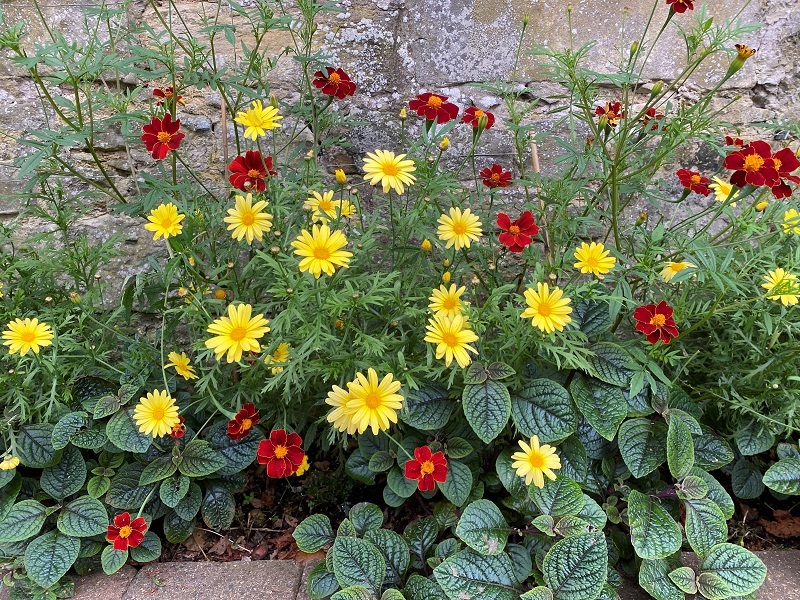 I have used yellow Argyranthemum ‘Jamaica Primrose’ for many years in pots and in this narrow channel in the yard. It flowers throughout the summer but can be the victim of a leaf miner which prevents it from growing properly. The leaf miner hasn’t been bad this year and the plants have done quite well. Argyranthemums are demanding plants – and need almost daily watering, frequent feeding and assiduous dead heading. New this year they are combined with this tall, spindly African marigold, Tagetes patula ‘Linnaeus Burning Embers’. The plants had been grown from seed from Sarah Raven in the Spring and were brought to our plant sale. In the front is Plectranthus ciliatum ‘Drege’ a very useful plant which is not hardy but easy to keep over the winter in the greenhouse.
I have used yellow Argyranthemum ‘Jamaica Primrose’ for many years in pots and in this narrow channel in the yard. It flowers throughout the summer but can be the victim of a leaf miner which prevents it from growing properly. The leaf miner hasn’t been bad this year and the plants have done quite well. Argyranthemums are demanding plants – and need almost daily watering, frequent feeding and assiduous dead heading. New this year they are combined with this tall, spindly African marigold, Tagetes patula ‘Linnaeus Burning Embers’. The plants had been grown from seed from Sarah Raven in the Spring and were brought to our plant sale. In the front is Plectranthus ciliatum ‘Drege’ a very useful plant which is not hardy but easy to keep over the winter in the greenhouse.
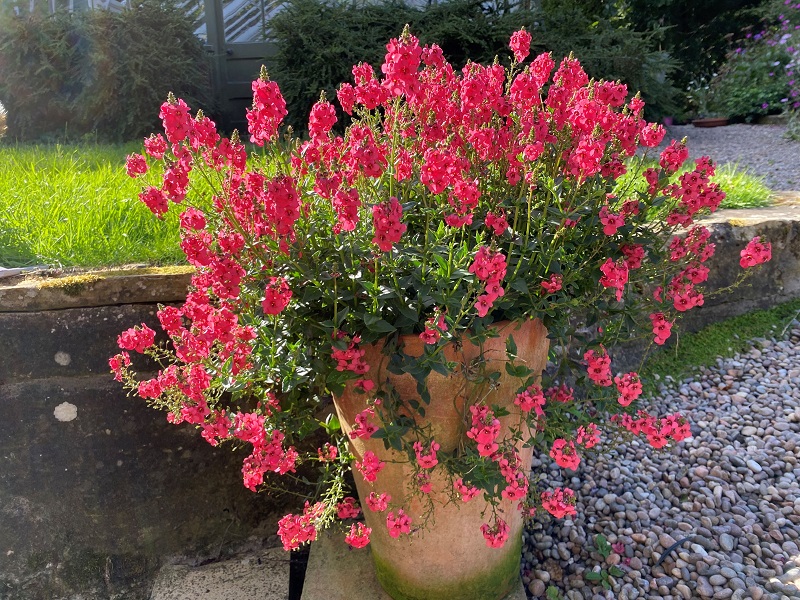 Diascia ‘Aurora Apricot’, photographed here a couple of weeks ago, but still in full flower, has been excellent, fits this old pot perfectly and requires little attention.
Diascia ‘Aurora Apricot’, photographed here a couple of weeks ago, but still in full flower, has been excellent, fits this old pot perfectly and requires little attention.
Anna Buxton
28th August 2023






